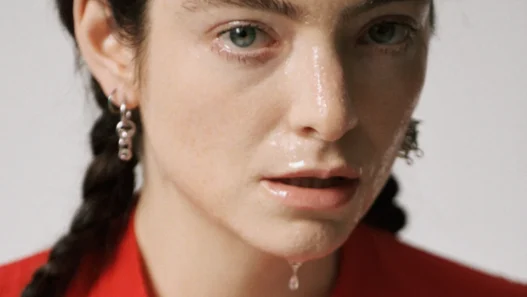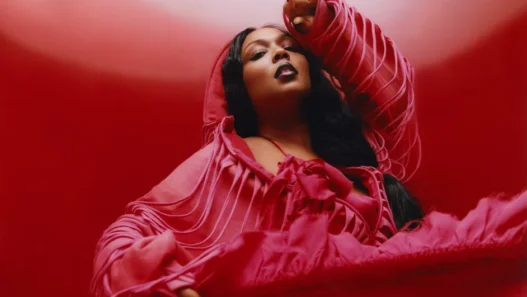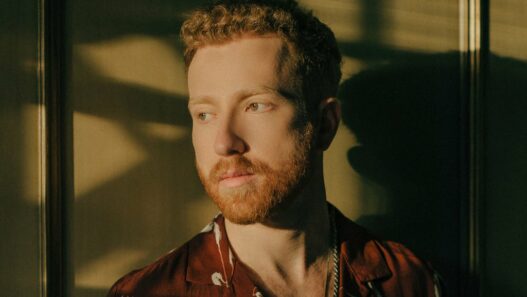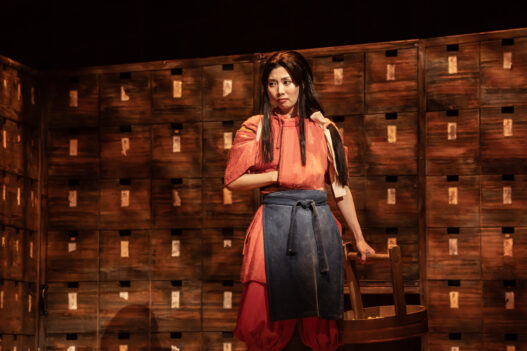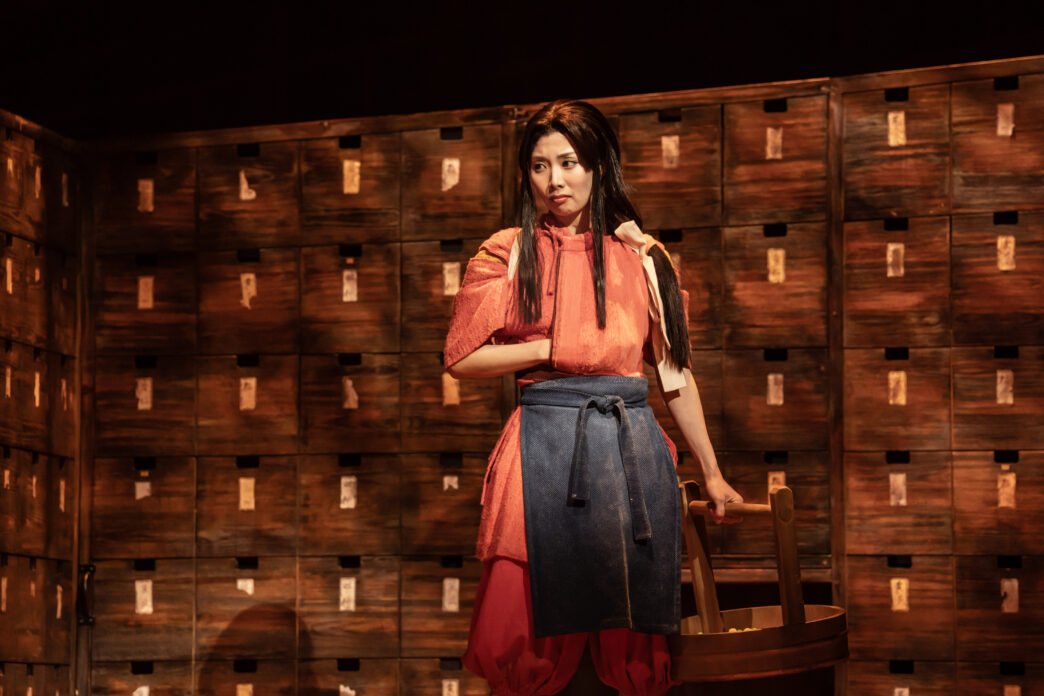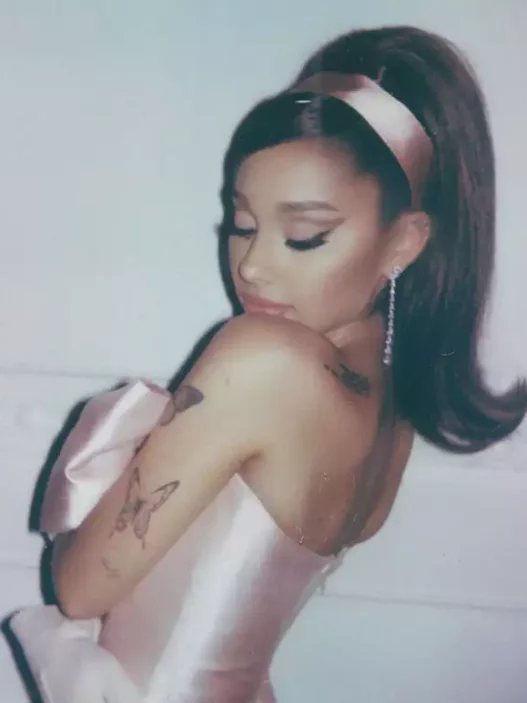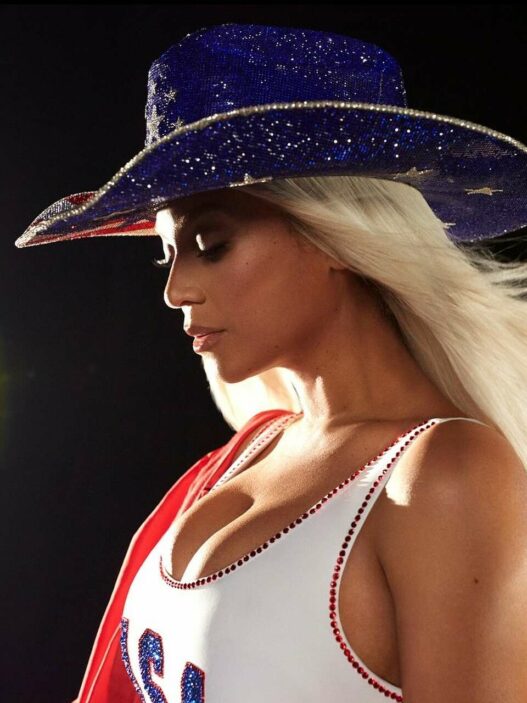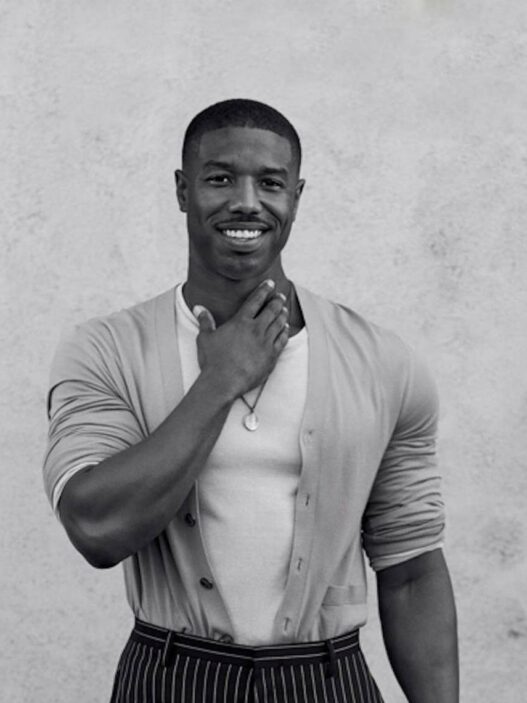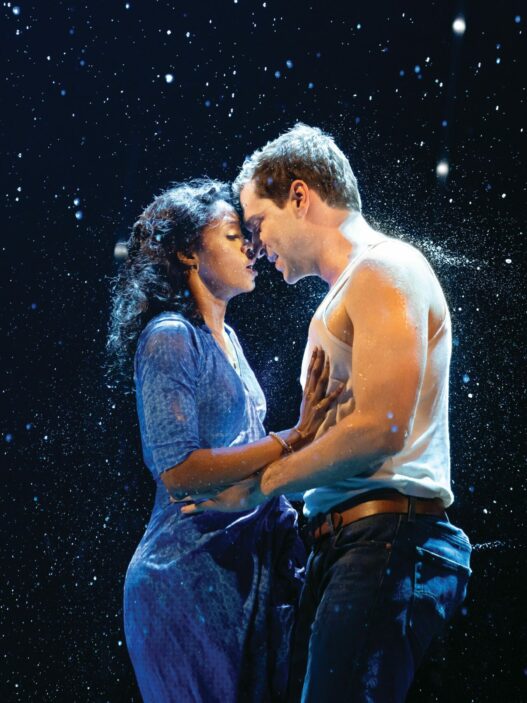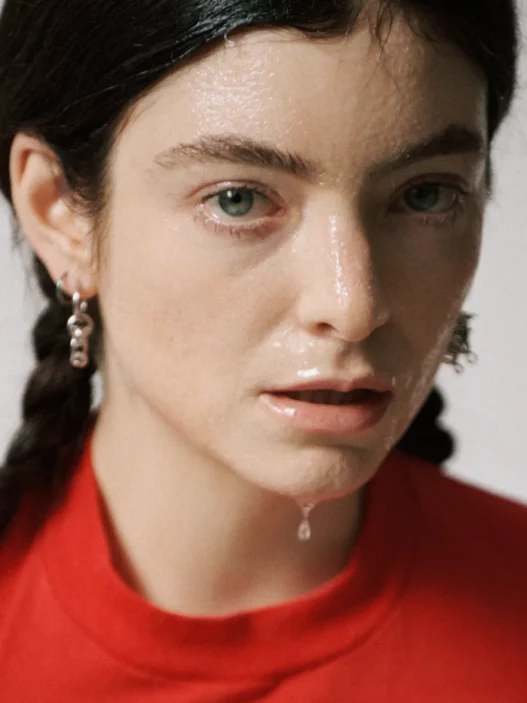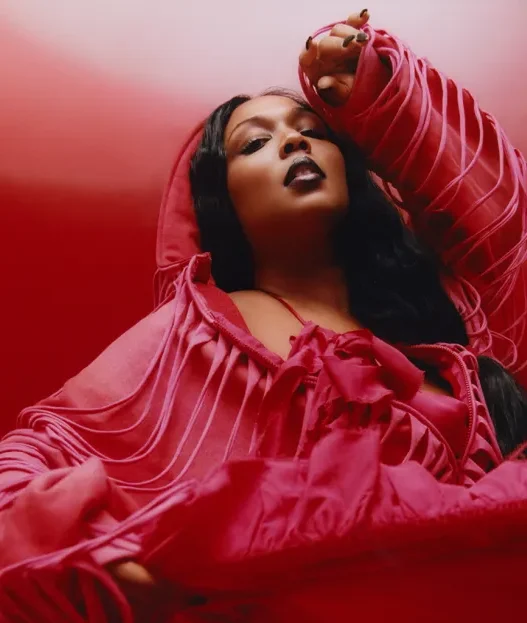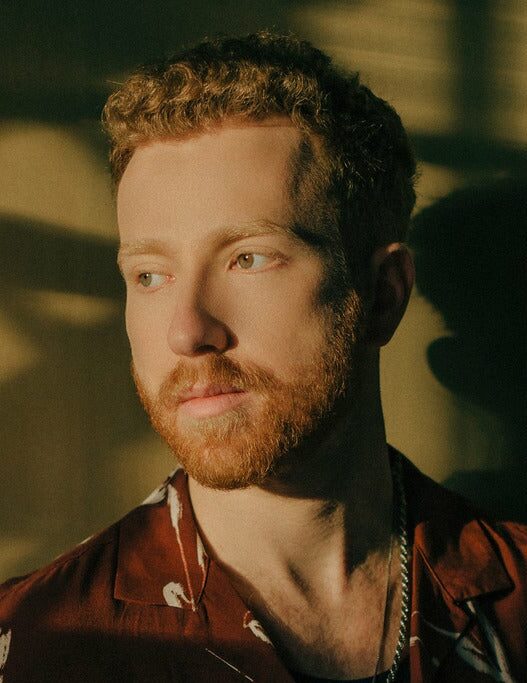Kanna Hasimoto as Chihiro riding Haku, a river spirit with the ability to turn into a dragon; Photo by Johan Persson
“Nothing that happens is ever forgotten, even if you can’t remember it.” Chances are if you ask a millennial what their favorite animated film is, they will say Hayao Miyazaki’s Spirited Away. This summer, audiences in London had the chance to relive their childhoods through John Caird (Les Misérables) and Maoko Imai’s West End adaptation of the film. Caird, who directed the show, brings the classic characters to life using a breathtaking array of puppetry and set design based on Japanese Shinto-Buddhist folklore.
First released in 2001, Spirited Away follows ten year old Chihiro “Sen” Ogino, who is moving to a new neighborhood with her parents. Along the way, they find themselves lost in a spirit realm. Chihiro makes friends with the spirits at a bathhouse as she tries to save her parents from Yubaba, a witch who turns them into pigs. It’s worth noting that the general public’s obsession with Spirited Away is not without good reason; the movie won the Academy Award for Best Animated Feature in 2002 and was the only non-English language film to do so until Miyazaki’s 2023 film The Boy and the Heron.
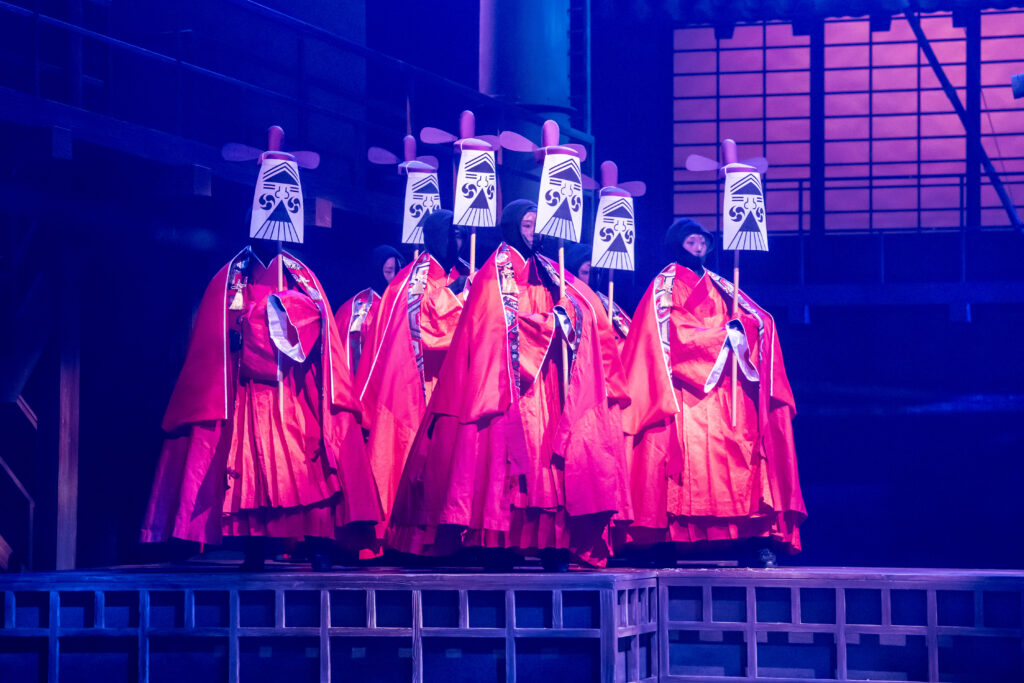
More than twenty years later, Spirited Away continues to captivate audiences around the globe. Caird and Imai’s adaptation premiered in Tokyo in 2022 before moving to the London Coliseum where the show ran from April 30th to August 24th. Kanna Hashimoto and Mone Kamishiraishi shared the role of Chihiro, and Mari Natsuki returned as Yubaba, reprising her role from the original film.
By far the standout of the show was Hikaru Yamano’s No-Face, referred to as Kaonashi in the original Japanese. No-Face is a silent spirit that Chihiro befriends at the bathhouse. Between his physicality and choreography from Shigehiro Ide, Yamano brings No-Face to life despite the character’s emotionless mask and few lines. No-Face blends into the flurry of characters on stage making it appear as if he can teleport from one side to the other. When he is front and center, No-Face’s shyness is expressed through Kaonashi’s timid movements that make it seem like he might disappear forever into the shadows off-stage.
That is until the scene that certainly haunted my dreams as a kid, where No-Face begins to eat the characters at the bathhouse and grows to an immense size. As No-Face eats more people, he grows larger and larger, transitioning from a single actor to twelve puppeteers working to animate the hulking figure on stage. The combination of puppeteers gives No-Face an expansive, rippling effect that emphasizes his aliveness that would have been lost had the creative team stuck to their original plan of using an inflatable nylon puppet.
The puppetry throughout the play was quite the feat. Bringing to life the spirits in all of their shapes and sizes was a massive undertaking, but one that Caird and puppet-designer Toby Olié accomplished seamlessly. Everything from the tiniest soot sprite to the heaving polluted river spirit is given the utmost care in stage animation. One of the first characters that Chihiro meets in the spirit world is Kamaji, an six-armed yokai (supernatural entities from Japanese folklore) who manages the boiler that heats the water for the bathhouse. Each of Kamaji’s additional limbs are controlled by a separate puppeteer. The team of puppeteers was able to work together as a single unit despite each arm being given unique direction by Caird.
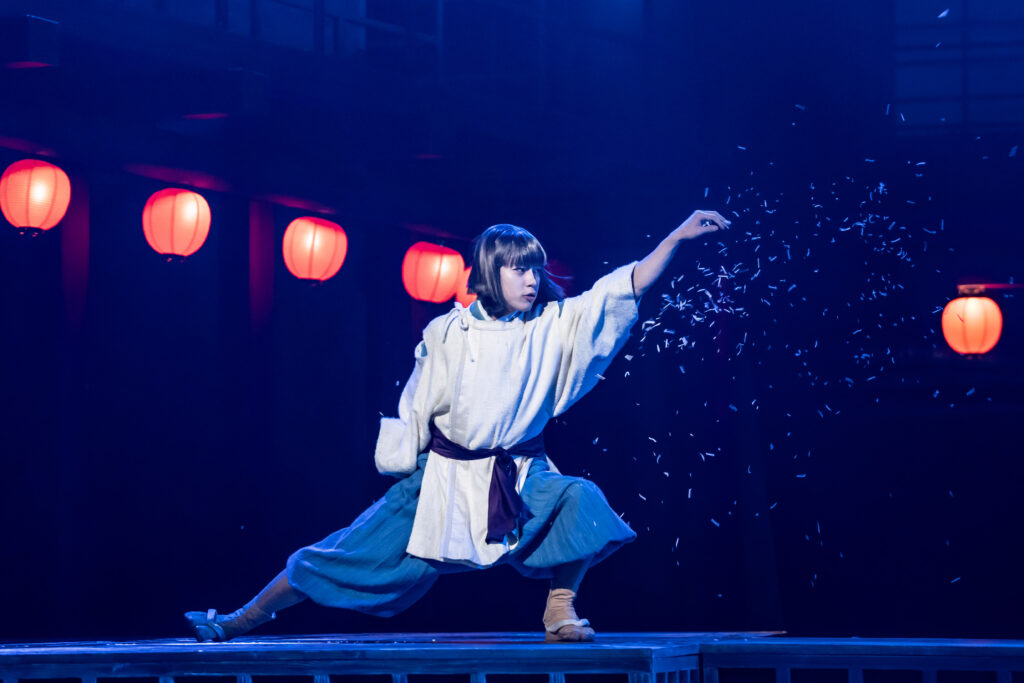
The music from the movie is also uniquely adapted for the stage. Brad Haak adapted Joe Hisaishi’s original score to be played by a live orchestra during the show. The show opens with the iconic chords from “One Summer’s Day”, one of Hisaishi’s best known songs. In an interview with Haak, Caird, and Imai on the podcast, Steve Pretty On The Origin of the Pieces, Haak describes the score, “Joe [Hisaishi] loves writing music that is very nebulous. It’s never happy or sad. It’s always something in between where it’s very much what you want to bring to the music.”
Spirited Away fanatics may notice the addition of songs that were not in the original film. No-Face’s theme in the play was adapted from “Lonely”, a song from Hisaishi’s image album for the film. In Japan, it is common for film composers to draft music inspired by the characters, themes, and plot of the film before composing for the film itself and releasing that initial music on an image album. While “Lonely” did not make it into the original movie, it can be heard throughout the play as No-Face slinks across the stage.
While there is accompaniment throughout the play, the show is not quite a musical. Rather than using musical numbers to express feelings, the music in the show is more naturalistic and sets the scene. In the interview, Caird also brings up the songs with lyrics sung by characters, like Kamaji, as they work in the bathhouse; these originated from poems written by Miyazaki to describe the feeling and story of Spirited Away to Hisaishi. “We needed moments that just give the audience a bit of a respite from the headlong speed of the story … so Makao created lyrics out of Miyazaki’s poems and we set them to music.”
Fans who missed the latest run of Spirited Away should be happy to know that two versions of Spirited Away: Live on Stage, one featuring Kamishiraishi and the other Hashimoto, are available to stream on Max in the U.S. For those looking to get their Studio Ghibli fix in person, they can check out the return of the Royal Shakespeare Company’s My Neighbour Totoro. Tom Morton-Smith’s adaptation of the 1988 animated film will run at the Gillian Lynne Theatre beginning March 8, 2025.



